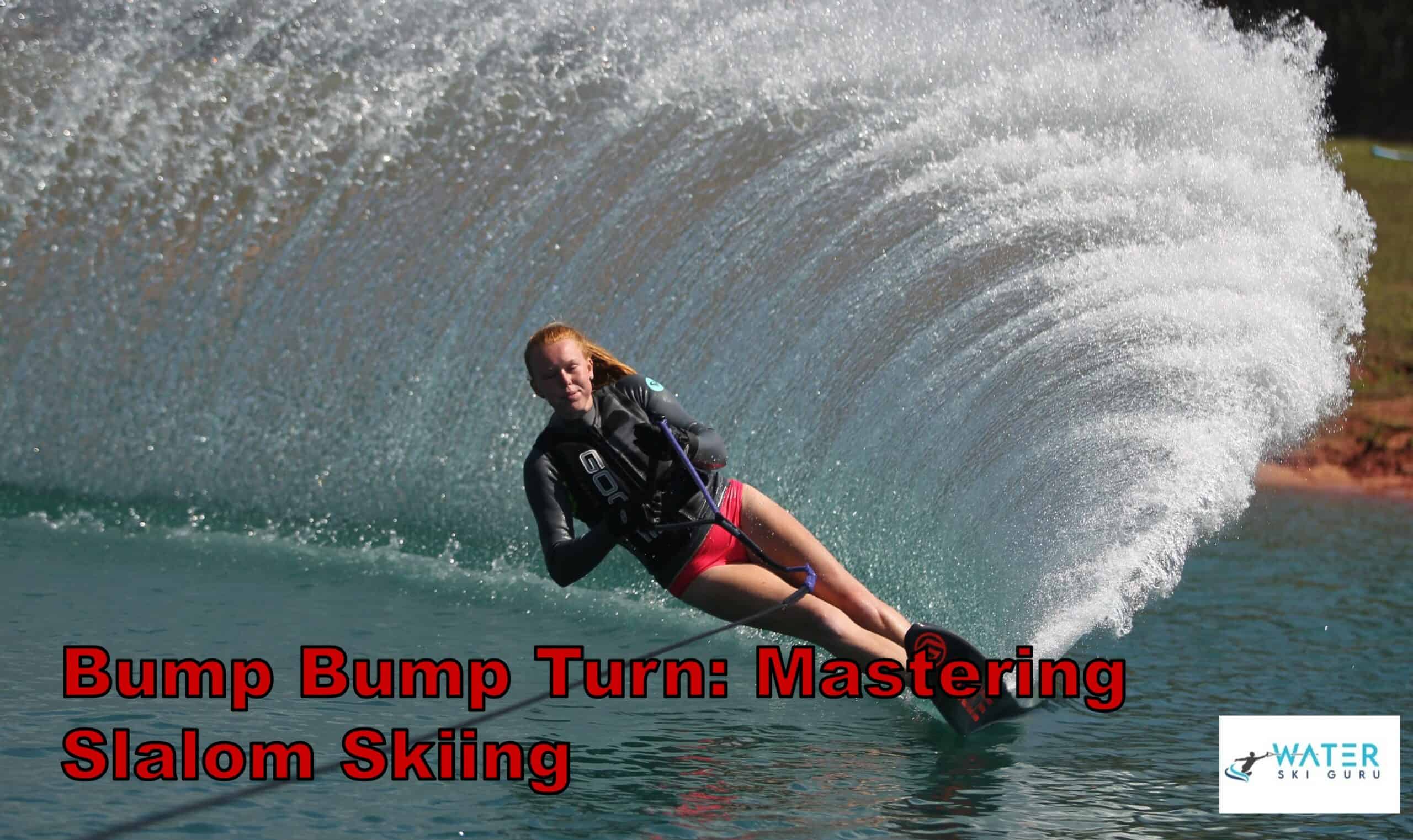Ah, the slalom turn. That elusive maneuver that separates the masters from the novices in the world of water skiing. It’s the move that makes jaws drop and crowds cheer. And yet, for so many of us, it remains an unattainable dream.
But fear not, my fellow skiers, for I have the solution: the Bump Bump Turn.
Yes, I know what you’re thinking. ‘Another exercise? Another drill? When will I finally just get to ski like a pro?’Trust me, I’ve been there.
But the truth is, mastering the fundamentals is the key to pulling off those awe-inspiring moves. And the Bump Bump Turn is the perfect exercise to help you do just that.
So let’s dive in and take a closer look at this technique, shall we?
Exercise Technique
I love the exercise called ‘Bump Bump Turn’ because it’s all about timing and it’s the perfect technique to master slalom turns in water skiing.
This drill helps improve balance and body positioning when crossing over the wake and initiating the turn. The key to this exercise is to start on a straight stretch of water at a comfortable speed and cross back and forth over the wake.
As you cross the wake, count ‘1’ when your ski bumps through the near-side wake and ‘2’ when your ski hits the second wake. Count ‘3’ to initiate the turn. Timing is crucial in this exercise, and once mastered, you can work on extending your inside handle during the turn.
Keep in mind that this drill works for any boat speed, ski speed, and ski angle. Don’t rush to look the part before mastering the fundamentals.
Timing and Counting
Timing is crucial when crossing back and forth over the wakes, and counting helps me initiate the turn at the right moment. As I approach the near-side wake, I count ‘1’ and bump over it.
Then, as the ski hits the second wake, I count ‘2’. Finally, I count ‘3’ to initiate the turn. This counting game helps me maintain a consistent rhythm and timing, which is essential for mastering the bump bump turn.
One of the most common mistakes people make when practicing this drill is rushing through the counting game and not paying attention to the timing. It’s important to take the time to get the timing right by practicing consistently.
With consistent practice, I’ve noticed an improvement in my ability to initiate the turn at the exact moment I want to. The benefits of consistent practice go beyond just mastering the bump bump turn. It helps me develop my overall slalom skiing skills, as well as my ability to stay focused and disciplined while on the water.
Progression and Feedback
The author of the virtual water ski coaching service emphasizes the importance of progression and feedback in improving one’s performance on the water. As one masters the timing and counting of the ‘Bump Bump Turn’ exercise, it is important to track progress and receive feedback from a virtual coach.
This is where a training journal and virtual coaching service come in handy. A training journal is a useful tool for recording progress, setting goals, and identifying areas for improvement. By keeping track of one’s achievements and challenges, it becomes easier to adjust the training plan and measure results.
Meanwhile, a virtual coaching service offers personalized feedback and guidance on technique, equipment, and strategy. With the help of a virtual coach, one can accelerate their learning and overcome any barriers to success. By combining the use of a training journal and virtual coaching service, one is able to maximize their potential and reach new heights in their slalom skiing performance.
Frequently Asked Questions
What type of equipment is needed for the Bump Bump Turn exercise?
To perform the Bump Bump Turn exercise for slalom skiing, water ski equipment such as skis, bindings, and a tow rope are necessary. For beginners, some best brands to consider are O’Brien, Connelly, and HO Sports.
How long does it typically take to master the timing of the Bump Bump Turn?
How long does it take to master the timing of the Bump Bump Turn? Common challenges include timing and speed. Effective drills involve repeating the counting game and extending the inside handle. Mastery comes with practice.
Can the Bump Bump Turn be used for other types of water skiing besides slalom skiing?
The Bump Bump Turn can benefit overall water skiing by improving timing and control. However, the execution differs for slalom and other styles. Slalom requires crossing the wake, while other styles may not. Mastering the timing is key for success.
Are there any common mistakes that beginners make when attempting the Bump Bump Turn?
Common mistakes when attempting the Bump Bump Turn include improper weight distribution, incorrect timing, and lack of confidence. Proper technique involves initiating the turn on the third bump and maintaining a strong inside edge. Practice and repetition are key to success.
How can the Bump Bump Turn be adapted for more advanced skiers looking to challenge themselves?
As an advanced skier, there are many variations and modifications to the Bump Bump Turn that can challenge you. Advanced techniques include adding a spin before the turn or initiating the turn earlier. The possibilities are endless, so keep experimenting and pushing yourself to improve.

